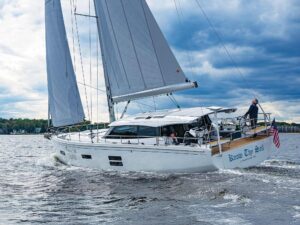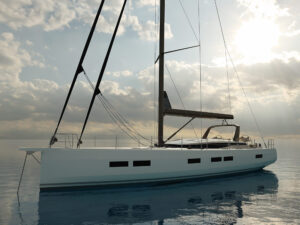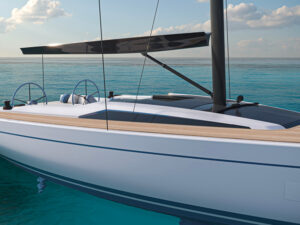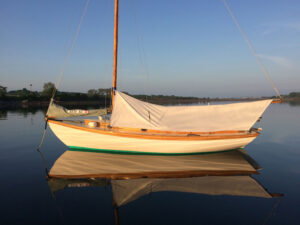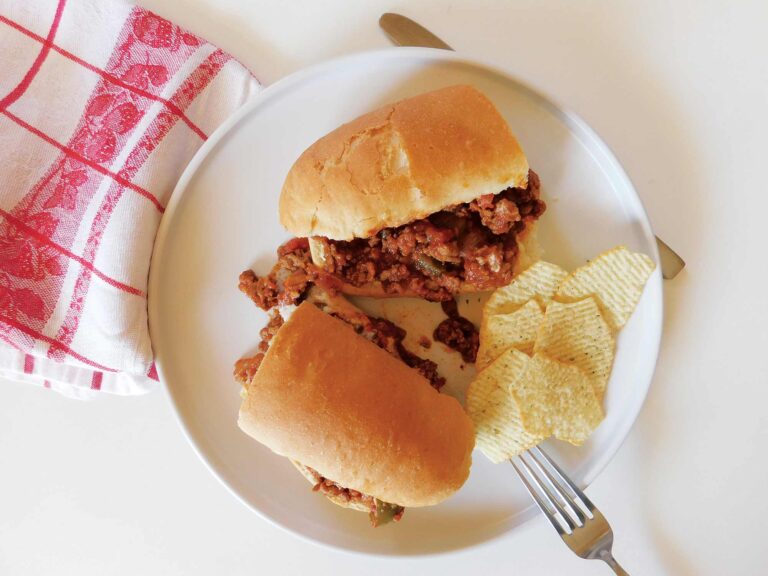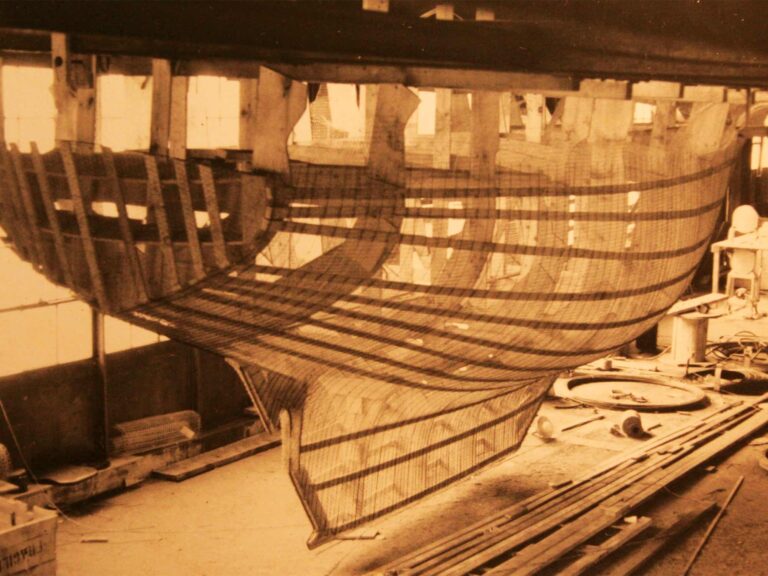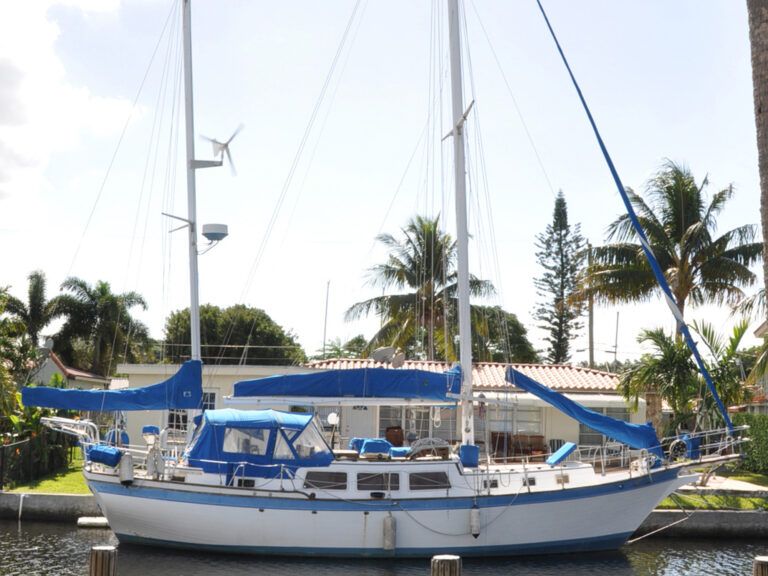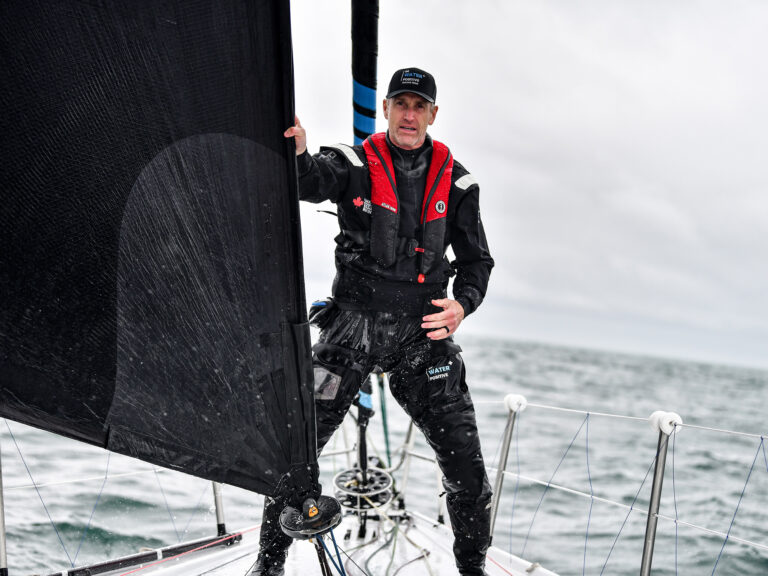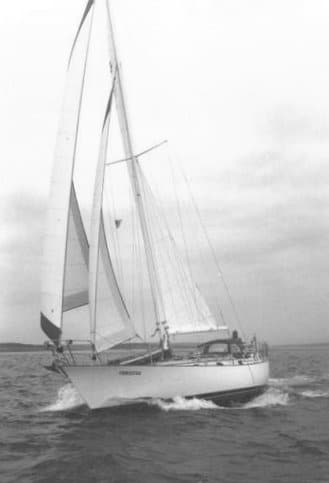
Very few stock production boats are up to the rigors of an around-the-world race. Even fewer actually have completed such a feat. When Francis Stokes finished the 27,000-mile inaugural BOC Challenge in 1983 he was one of only 10 finishers in a race that saw 16 competitors at the starting line aboard everything from high-tech, one-design, purpose-built rocket ships to converted family cruisers. His William Garden-designed, Tollycraft-built Fast Passage 39 occupied a niche somewhere in between.
Garden’s involvement was solicited by Denny Coverdale, an employee of Philbrooks Shipyards in Sydney, B.C. Denny had cruised his Taiwan ketch in the company of the 1960s-built sloop Bolero for most of a summer. He liked the boatÕs characteristics and asked Garden to draw the plans for a modern Bolero, suitable to build as a stock production boat.
Happy owners, dozens of transoceanic passages and many complete circumnavigations later, the success of the Garden/Coverdale collaboration is apparent in the Fast Passage 39s.
About 40 were built between 1976 and 1985, most by Philbrooks (36 hulls, decks and/or complete packages); four, including Francis Stokes’ Mooneshine, were built by Tollycraft. It was possible to purchase the 39 in kit form, hull and deck supplied by Philbrooks, or as a complete yacht commissioned by the shipyard. Shipyard-completed boats were done to a very high standard (typical of Philbrooks) and some of the owner-finished boats were done well also. However, a wide variety of rigs, engines, equipment, tankage and interior appointments will be found among the 39s still sailing, so careful inspection is important. Denny still lives on a Philbrooks-produced Fast Passage 39 in Sydney, B.C. A call to Philbrooks with questions about a certain 39 will lead eventually to a connection with Denny – the best source of information if you can find him.
At 39’6″ with a beam of 11’2″ and draft of less than 6’ (5’6″), the FP 39 is roomy, efficient, manageably sized, and instantly popular with would-be voyagers. Two interior versions were offered: traditional “stateroom” or a sunken deckhouse option. In the stateroom version, a passage berth is starboard of the companionway stairs, with a chart/nav area and head just forward of that. The head/shower arrangement in the main part of the cabin is handy, but takes up premium space in the beamiest and most comfortable part of the boat. Personal preference dictates whether this is an acceptable arrangement. On the port side, the private cabin with loads of storage makes a great owner’s stateroom. The engine shares part of this space, but in most of the boats lots of insulation and ventilation make it a fine layout. The traditional U-shaped galley with aft-facing sinks provides a secure work area while underway.
Garden describes the forward area as a “good two-berth coast cabin with lockers and a sit-around saloon.” Storage is adequate, and depending on interior finish, the space can be both functional and pleasing to the eye.
For a cruising design from the 1970s, the underbody shows less wetted surface than one might expect, with a moderately long and shallow fin keel, skeg-hung rudder, and cutaway forefoot. The reasonably fine, raked bow with the canoe-like bustle aft gives a unique, pleasing, functional appearance.
Francis Stokes described the Fast Passage as an excellent all-around sea boat, noting that when sailing against a Valiant 40 he would shorten sail quicker but always seemed to go as fast. In writing about Mooneshine’s performance in the 1982-1983 BOC Challenge he said, “I am sure that the 39 is very effective in the light going, despite being a true cruising design… The 5’6″ draft seems to work well downwind in those more anxious times…”
He noted that he used small headsails going to weather, often with a double-reefed main, staysail and storm jib. Leeway was a problem with heel greater than 20 degrees, so reefs in the main were a regular drill. A good test of any boat considered for passage making is how easily it can be steered by windvane and/or autopilot. Francis remarked that his windvane and autopilot worked well in almost all conditions; the boat was directionally stable even when surfing.
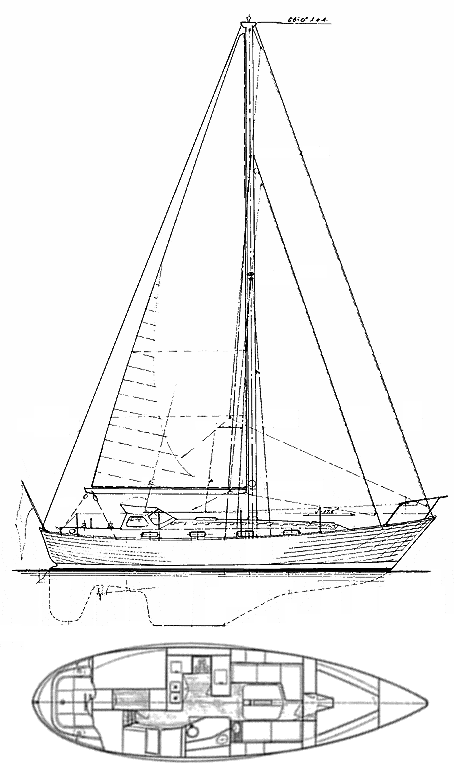
Given that only 40 were built, it’s apt to be difficult to find a Fast Passage when you want one. Those who own them tend to keep them, which means they sell quickly and usually at the prices listed. The best “bargain” might be a 1970s-produced Philbrooks Shipyard boat in the $70,000 to $85,000 range, if you can locate one. The BUC books list Fast Passages in the 1982-1985 model years between $117,000 and $137,000. With some of these “owner finished,” others factory finished, it is difficult to make a recommendation as to price or model year for the bargain shopper. Philbrooks is an excellent shipyard and they produced a quality product. Francis Stokes certainly proved that Tollycraft-built boats could be equally as well done and equally as reliable although, as noted, only four were actually produced.
Several 39s are in the Sydney, B.C. marina. More are scattered in marinas primarily on the west coast. The rest are out there cruising, with at least two (and probably more) currently finishing circumnavigations. Keep the Fast Passage 39 on your short list of tried, true and comfortable cruising possibilities, but be prepared to buy quickly if you find one for sale.
Fast Passage 39 Specifications
LOA: 39’6″ (12.0 m.)
LWL: 33’6″ (10.2 m.)
Beam: 11’2″ (3.4 m.)
Draft: 5’6″ (1.7 m.)
Ballast: 7,500 lbs. (3,402 kgs.)
Disp: 22,000 lbs. (9,979 kgs.)
Sail area: (100%) 735 sq.ft. (224 sq.m.)
Ballast/Disp: .34
Disp/Length: 261
SA/Disp: 15
Designer: William Garden

